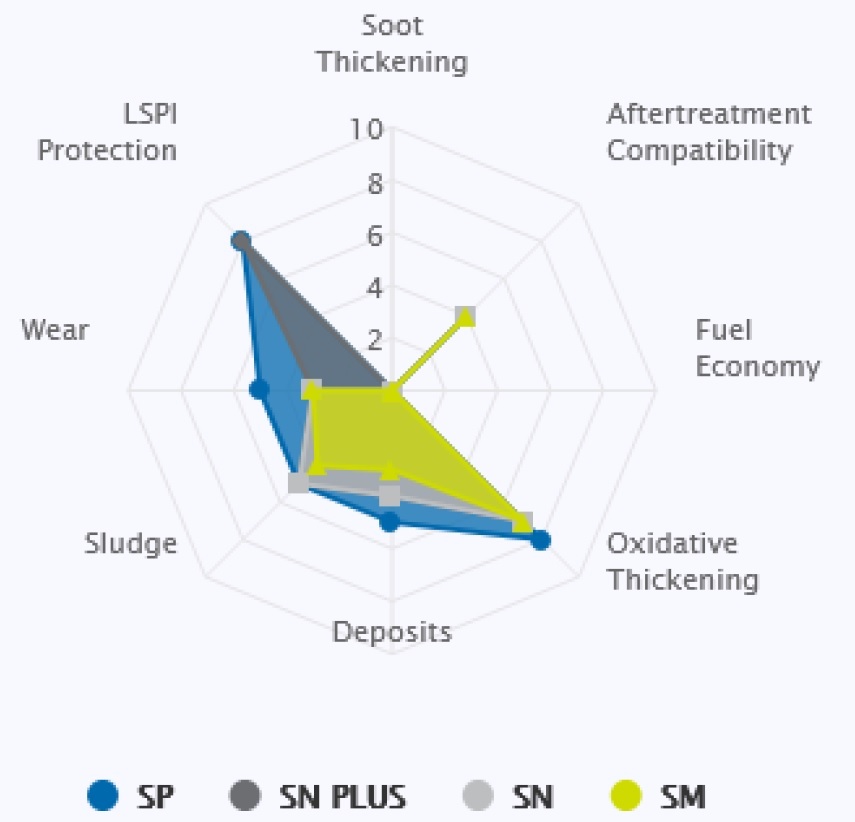Current issue
Online first
Archive
About the Journal
Aims and scope
Publisher and Editorial
Advertising policy
For Authors
Paper review procedures
Procedures protecting authentic authorship of papers
Paper preparation manual
Plagiarism check
Publication ethics
Reviewers
APC
Editorial and Scientific Board
Contact
Reviewers
Analysis of the current lubricant requirements of the latest combustion engines
1
Faculty of Automotive and Construction Machinery Engineering, Warsaw University of Technology, Poland
These authors had equal contribution to this work
Submission date: 2025-06-15
Final revision date: 2025-09-12
Acceptance date: 2025-09-25
Online publication date: 2025-10-30
Corresponding author
Mateusz Bednarski
Faculty of Automotive and Construction Machinery Engineering, Warsaw University of Technology, Narbutta, 02-524, Warszawa, Poland
Faculty of Automotive and Construction Machinery Engineering, Warsaw University of Technology, Narbutta, 02-524, Warszawa, Poland
KEYWORDS
TOPICS
ABSTRACT
The advancement of combustion engines is driven by stricter emission regulations (e.g., Euro/EPA standards), requiring innovations in lubrication. Modern oils must ensure wear protection, emission system compatibility (e.g., DPFs, SCRs) and fuel efficiency. This paper analyzes updates to ACEA, API, and OEM specifications, focusing on oxidation resistance, low-SAPS formulations, and fuel economy. The trend toward low-viscosity oils (0W-20, 0W-16) reduces friction but challenges lubrication under high loads. The study evaluates these changes’ impact on engine durability and future oil development amid tightening sustainability and emission norms. This article will analize lubricant requirments for passenger cars and light commercial vehicles.
REFERENCES (15)
1.
American Petroleum Institute. API 1509: Engine Oil Licensing and Certification System. 18th ed. Washington, DC: API 2022.
2.
American Petroleum Institute. API 1509: Engine Oil Licensing and Certification System. 19th ed. Washington, DC: API Publishing Services 2024.
3.
ASTM International. ASTM D2272-14(2019): Standard test method for oxidation stability of steam turbine oils by rotating pressure vessel. West Conshohocken, PA: ASTM 2019.
4.
ASTM International. ASTM D4951-14(2019): Standard classification and specification for automotive service greases. West Conshohocken, PA: ASTM 2019.
5.
BMW Group. Engine oil specifications: technical service bulletin. Munich: BMW Group 2023.
6.
Chłopek Z, Biedrzycki J, Lasocki J, Wójcik P. Assessment of the impact of dynamic states of an internal combustion engine on its operational properties. Eksploat Niezawodn. 2015;17(1):35-41. https://doi.org/10.17531/ein.2....
7.
European Automobile Manufacturers' Association. ACEA European Oil Sequences 2021. Brussels: ACEA 2021.
8.
European Automobile Manufacturers' Association. ACEA European Oil Sequences for Light-Duty Engines. Brussels: European Automobile Manufacturers' Association; 2023. https://www.acea.auto/files/20... (accessed on 10.05.2025).
9.
European Parliament, Council of the European Union. Regulation (EU) 2018/858 on the approval and market surveillance of motor vehicles and their trailers. Official Journal of the European Union. 2018;L151:1-218.
10.
Growney D, Joedicke A, Williams M, Robin M, Mainwaring R, Davies M. Hybrid electric vehicle engine operation and engine oil degradation: a research approach. SAE Int J Fuels Lubr. 2024;17(1):3-16. https://doi.org/10.4271/04-17-....
11.
Hybrid-Specific Lube. Lube Media 2023. https://www.lube-media.com/wp-... (accessed on 10.05.2025).
12.
Japanese Automobile Standards Organization. JASO GLV-1: Light Vehicle Gasoline Engine Oil Standard. Tokyo: JASO 2016.
13.
Lubrizol's RELPERF Tool. Wickliffe, OH: The Lubrizol Corporation. https://online.lubrizol.com/re... (accessed on 10.05.2025).
14.
Stępień Z. Vehicle related non exhaust particle emissions – Euro 7 requirements. Combustion Engines. 2024;199(4):15-29. https://doi.org/10.19206/CE-19....
15.
Volkswagen AG. VW 508 00/509 00: Engine Oil Quality Standard. Wolfsburg: Volkswagen AG 2023.
We process personal data collected when visiting the website. The function of obtaining information about users and their behavior is carried out by voluntarily entered information in forms and saving cookies in end devices. Data, including cookies, are used to provide services, improve the user experience and to analyze the traffic in accordance with the Privacy policy. Data are also collected and processed by Google Analytics tool (more).
You can change cookies settings in your browser. Restricted use of cookies in the browser configuration may affect some functionalities of the website.
You can change cookies settings in your browser. Restricted use of cookies in the browser configuration may affect some functionalities of the website.



